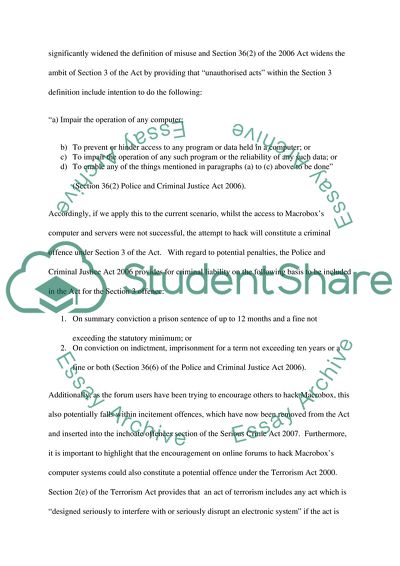Cite this document
(What is the Computer Misuse Act Assignment Example | Topics and Well Written Essays - 1750 words - 1, n.d.)
What is the Computer Misuse Act Assignment Example | Topics and Well Written Essays - 1750 words - 1. Retrieved from https://studentshare.org/law/1750336-computers-and-the-law
What is the Computer Misuse Act Assignment Example | Topics and Well Written Essays - 1750 words - 1. Retrieved from https://studentshare.org/law/1750336-computers-and-the-law
(What Is the Computer Misuse Act Assignment Example | Topics and Well Written Essays - 1750 Words - 1)
What Is the Computer Misuse Act Assignment Example | Topics and Well Written Essays - 1750 Words - 1. https://studentshare.org/law/1750336-computers-and-the-law.
What Is the Computer Misuse Act Assignment Example | Topics and Well Written Essays - 1750 Words - 1. https://studentshare.org/law/1750336-computers-and-the-law.
“What Is the Computer Misuse Act Assignment Example | Topics and Well Written Essays - 1750 Words - 1”. https://studentshare.org/law/1750336-computers-and-the-law.


